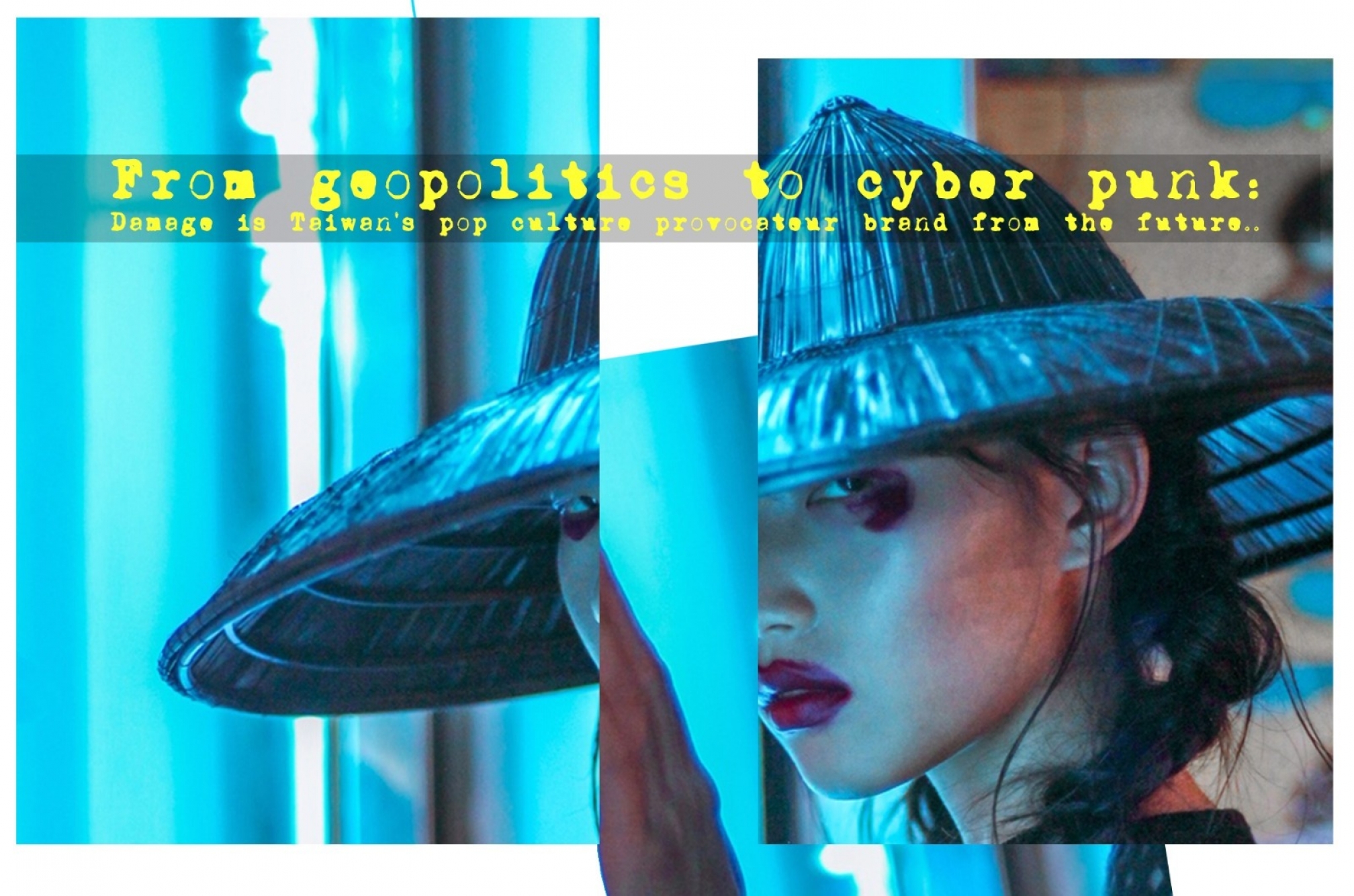 Fashion
Fashion
From geopolitics to cyber punk: Damage is Taiwan’s pop culture provocateur brand from the future
The brand is at the bleeding edge of music, art, film, politics & ideas in Taipei
It’s easy to get lost in Taipei’s labyrinthine alleys. Baroque with details, neon-lit neighbourhoods like dōng qū (東區) are a clash of sweet and saccharine cafes, gaudy street art and ostentatious boutiques that for the most part have resisted the influence of Western fashion — and AMPM is like a chemical romance of all of the above. The space was for the avant-gardeists of Taipei’s creative communities and also served as a central HQ for Damage, its in-house streetwear brand that embodies the anarchic spirit of rave culture.
Damage is the groundbreaking fashion brand at the bleeding edge of Taipei's music, art, film, politics and ideas subcultures — except it's about more than fashion for the way it looks on... it’s a little deeper than that. The brand’s graphic oeuvre satirizes images of memes, subversion, human conflict and controversy surrounding the conditioning of warfare within today’s modern society (think anything from the Abu Ghraib prison torture scandal to portraits of Kim Jong-un). Their tongue-in-cheek collections further blend fantasy and futurism with hardware nuances that look toward the future, generating iconic images that have catapulted the brand from being a one-time collaboration to a global phenomenon with a cult social media following.
The absolute uniqueness of the label makes it stand out amongst other Taiwanese brands, but Damage is not exactly representative of local trends. The label is a synthesis of many cultures, presenting a different take on Asian fashion that nurtures pop culture consciousness within its followers — which is apparent when going through their digital catalogue. But every image we saw posed a new question, so we got them answered. Damage is founded by Andy and Joe, a husband-and-wife duo that has resisted the manifesto since the early days of their first brands more than a decade ago, and although their ideas might prove imperceptible to the masses, they did a good job of letting us into their heads.
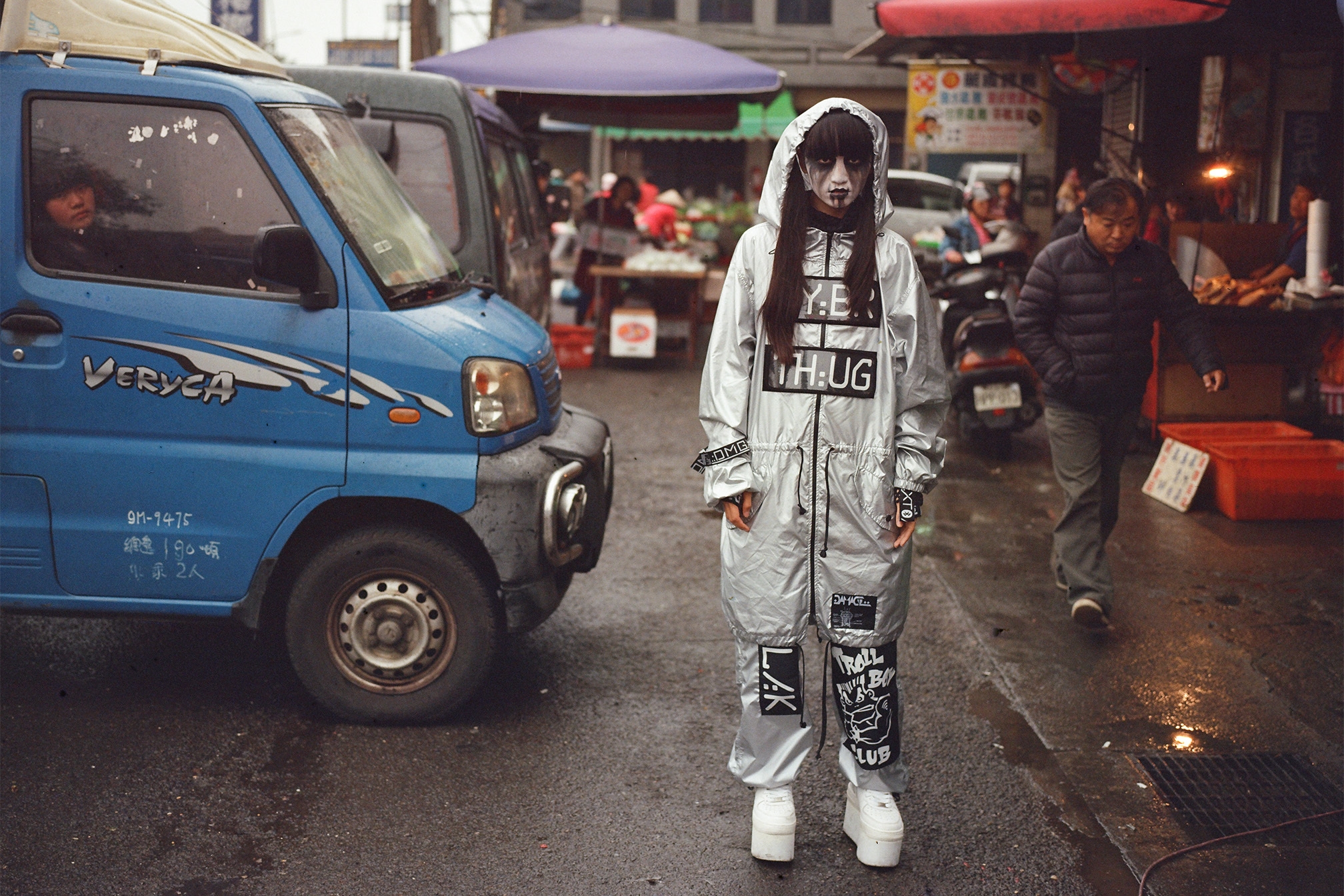
From AMPM to Damage, how does the story of the label unfold?
"Damage started out as a fun clothing capsule project between myself and my wife Joe (Petshops Girl). We were doing our own brands at the time and wanted to collaborate on some type of fashion and art project. We were both looking to explore something new and do something a little edgier than our own brands at the time. Finally, in 2014 we found ourselves with more free time to spare and took that window to make it happen. Since Joe had already been doing more experimental high-street style stuff, we combined her interest in these elements with my background and knowledge of street style fashion and it all evolved quite nicely from there.
We finally launched Damage in Tokyo 2015 and had a very strong reception from the beginning — it really took off and helped us get more attention internationally. It was meant to be a one-time collaboration, but we were getting more and more orders and interested parties contacting us to carry it. So from there really, it became an established brand. After that, we kind of ditched our two other individual brands and focused entirely on ‘Damage Group’ as our main project and AMPM as our flagship shop."
What’s the inspiration behind the art direction of Damage?
"There are many inspirations, although we could say the main elements are a cyberpunk esthetic combined with a futuristic high-street Gothic style. And because of our mutual interest in rave culture, when we first started this project we agreed that we wanted to focus on sexier exaggerated club-style wear that could also work as a functional everyday street-style vibe. We also wanted darker themes and imagery that would compliment the name we gave to our brand — Damage Group.
We also really wanted to work in geopolitical themes revolving around government corruption, global strife, nuclear and biological warfare, government surveillance, technology, and any topic that is making the world, in some cases, a worse place to live in for the ordinary person. We highlight these issues in a kind of comical way and make fun of them with ridiculous memes and comical graphic content, which we make shocking and, at times, even distasteful.
Essentially, we used the brand as an outlet to rage about all these topics without feeling responsible to anyone. We're just having fun with it while at the same time serving as functional wear — so in some sense, it's wearable art. We knew there were people out there that would like it and get it, and not a lot of street brands were really doing this when we launched, so we got attention right away for being bold.
That don’t-give-a-fuck attitude really resonated within the Japanese underground fashion scene that we encountered when we first launched in Tokyo. They want loud and in-your-face, and that’s essentially what our first collection hit."
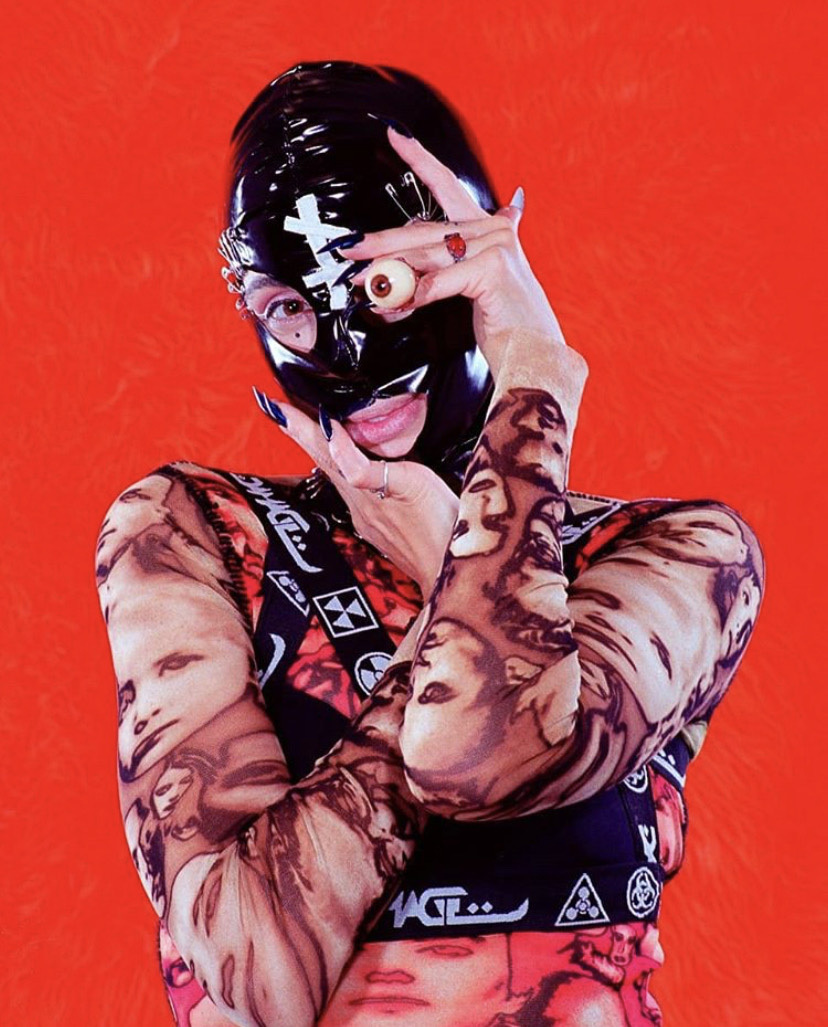
What are some of the prominent themes behind your collections?
"Our first collection was called Fuck The World (FTW Collection), which already gives you a pretty good idea about what we were getting at. This was all about the internet, conspiracy theories, NWO, nuclear warfare, biological warfare, weapons contractors, the pharmaceutical industry and anything from major corporations that we felt were involved in controlling the world — just everything related to the evil shit we thought was causing harm to life on earth. We sampled pieces of corporate logos and used graphic images pertaining to world destruction and meshed it all together for a very comprehensive collage of visual world disorder, which expressed our feelings about the type of environment most people are living in — chaotic, disorderly, etc.
Another collection we did was based off the connection between humans and military technology, specifically drone technology. It was called the Drone Porn Collection and illutstrated how there is little human emotion involved in using this type of military technology and is seemingly closer to playing a video game than real life. This further highlighted how video games are conditioning people to be less emotional so our society can kill more efficiently. The collection also spoke a little about the dangers of robotics and AI, which now is at the forefront of the newest military surveillance technology and will drastically change our world in the future.
Essentially, all the themes that we try to embrace in our collections relate to either the human condition in the future or the interaction of our living environments with the Internet, social media, technology and popular culture. We like these type of dark and dystopian themes because they talk about our reality both now and in the future, where information is exposed through a medium not typically common to these type of topics."
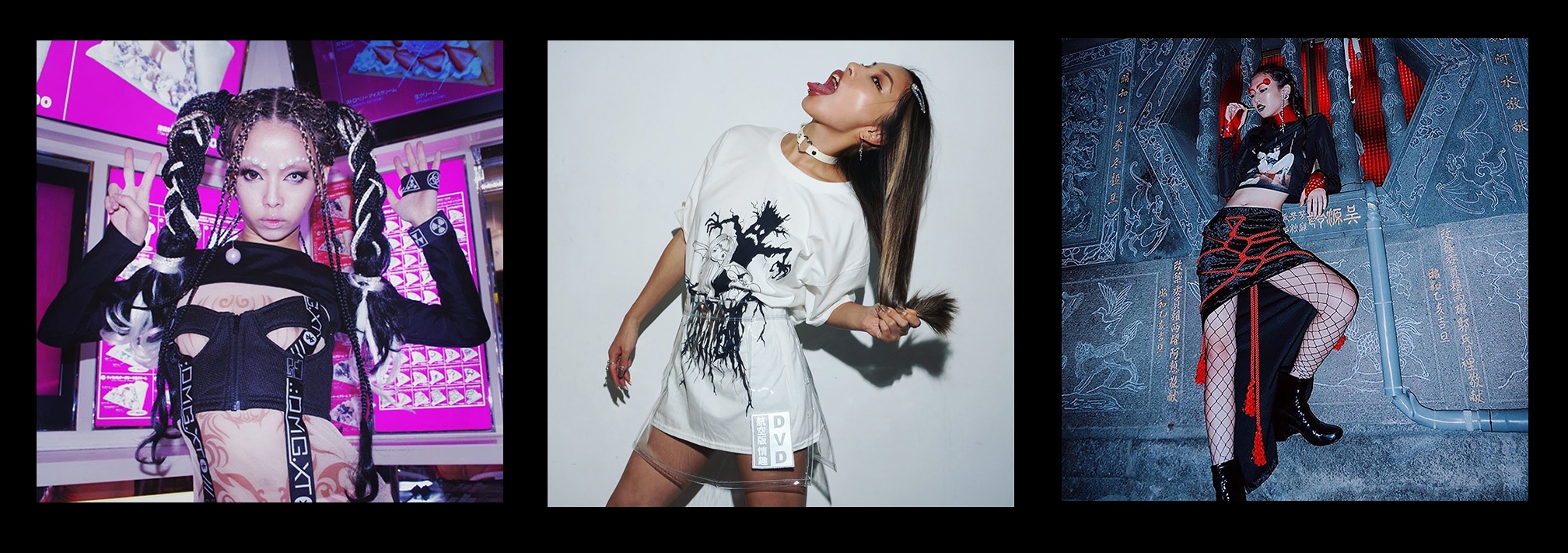
What about your almost mainstream success, why do you think these types of satirical references resonate so well with people through fashion?
"In the beginning, our fan base was essentially clubber type fashion divas and social media underground fashionistas. They are mostly always trendsetters and into the very edgy new fashion trends. Right away, this was our first clientele and they supported us from the beginning while promoting our brand to others in the same circles. As more and more people caught wind of us through those outlets, our brand began growing and expanding into a regular street and rave lifestyle crowds as well.
Our main fan base is usually very experimental people of all ages with very confident personalities that enjoy the shocking images we use and the brightly coloured unconventional style we make our garments into.
We live in a fast world these days, the lifestyle is loud and people want something that expresses this type of existence. Moreover, most people just enjoy that it's different than anything else they can find out there and the fact that we use weird themes for our different collections creates a kind of uniqueness that people are looking for. We also don't make large runs of all our items so there is an appeal to have something that will no doubt be exclusive in their wardrobe.
Damage isn't for everybody but nowadays, what was once shocking or weird is quite normal to see these days. More brands (even high-end brands) are going for that weird, shocking and lively aesthetic than ever before."
"We also really wanted to work in geopolitical themes revolving around government corruption, global strife, nuclear and biological warfare, government surveillance, technology, and any topic that is making the world, in some cases, a worse place to live in for the ordinary person. We highlight these issues in a kind of comical way and make fun of them with ridiculous memes and comical graphic content, which we make shocking and, at times, even distasteful."
Looking back, what have been some of your most popular pieces & collections?
"My favourite collections were the first we did — the FTW collection and the Drone Porn collection...they will always have a place with me because of the content we used and the topics interest me a lot. We also did a collection called the Tokyo Collection in which we used old Japanese Shunga and Shibari imagery combined with an electric street graffiti pattern esthetic to pay homage to Japloitation films and old tech noir movies from the 80s and 90s. It wasn't a very politically themed topic like previous collections but we focused on comparing taboos of old school society and discussed what "freedoms of sexuality" is now while living in the traditional and conventional society of today.
I really enjoyed the colourful patterns and the use of the Shibari rope and knot tying used within our designs for that collection. A lot of people really liked this collection and I also got to make a pattern using some street graffiti esthetics, which comes from my background in graphic and fine arts. It was a very loud look and people really appreciated this."
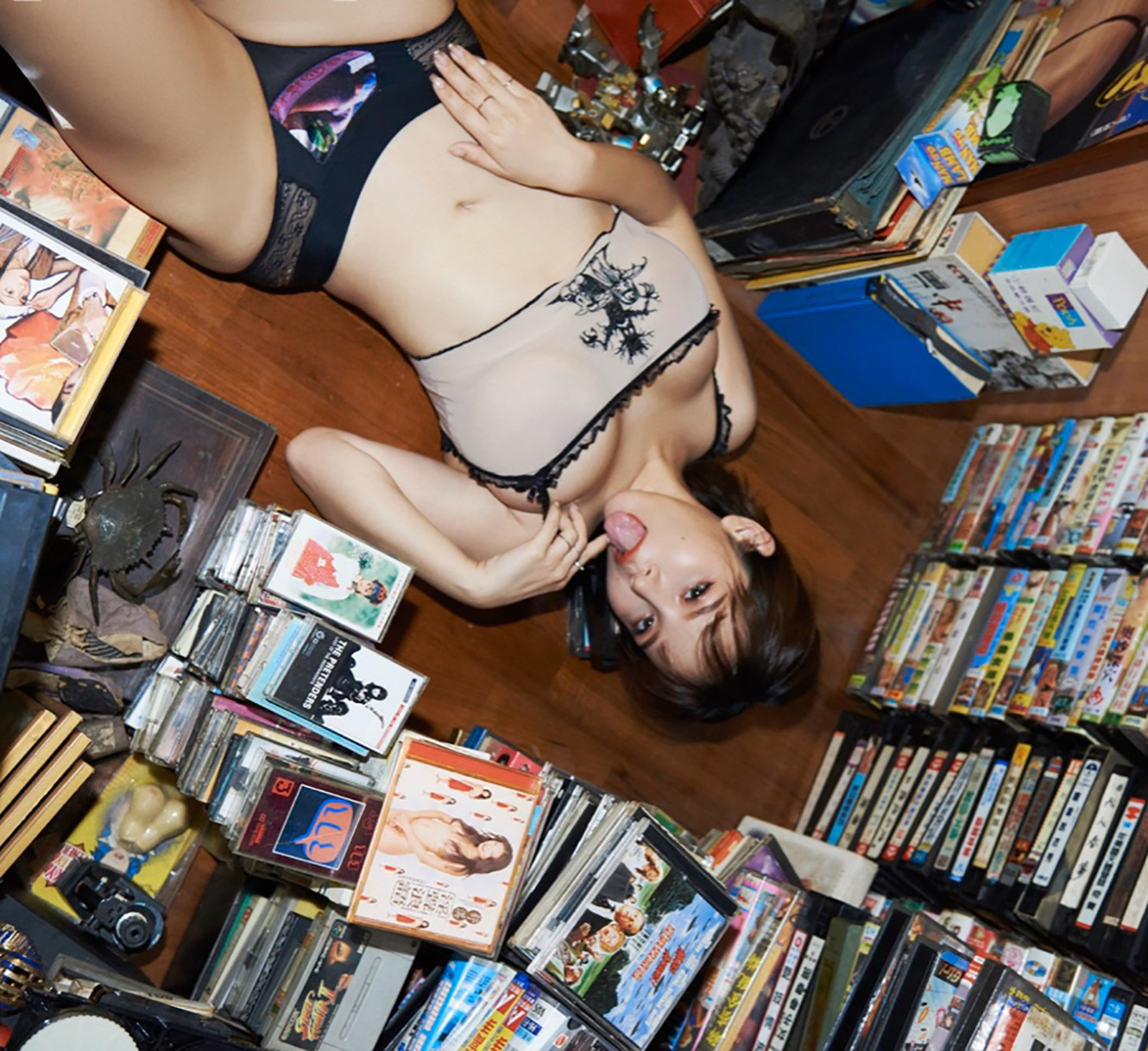
What’s your process like from inception to design to production?
"My wife and I first have a lengthy discussion about the theme for a collection, this being the first step in the evolution obviously. Some pieces are made by hand so we also need to consider how long it will take and what materials are easier to work with. These stages get fairly complicated because we both want to use certain fabrics or details but it raises the price point sometimes too high so we try to balance everything price-wise. The next stage is sourcing materials to and start making graphic patterns and logos and considering material combinations.
Joe will start sketching the garment patterns for the actual styles and we come back for a meeting to combine all the sources and designs it all together. Once we have an overall idea about the items were are making we go to source the fabric materials. We have a wholesale fabric re-sellers market we go to where we go searching and go through many swatches of fabrics before we choose the definite ones we need.
Once Joe makes all the clothing patterns and are ready we make our samples and if the samples are satisfactory we make our orders through our factory and the products are made."
Your fans are mostly from the rave scene but these looks aren’t what you’d see a lot of “ravers” in the West wearing. Is Asia more fashion-forward than music communities in Europe or North America?
"In the beginning, our primary fan base was Japan, then China, Hong Kong and Taipei. But now it's shifted and our main clientele is from North America (the US being the primary buyers) and Europe second, then Australia and after that Asia.
Overall, I'd say we are still a fairly small independent underground brand even though we've had some commercial success with it. A lot of our client base are still underground fashion kids which also aren't typically going to the bigger rave events that you might think they'd be at, but are more into the club-style culture you see at smaller events. Surprisingly, you don't really see a lot of people wearing our clothes out at big festivals or big party type environments, unless you're really looking."
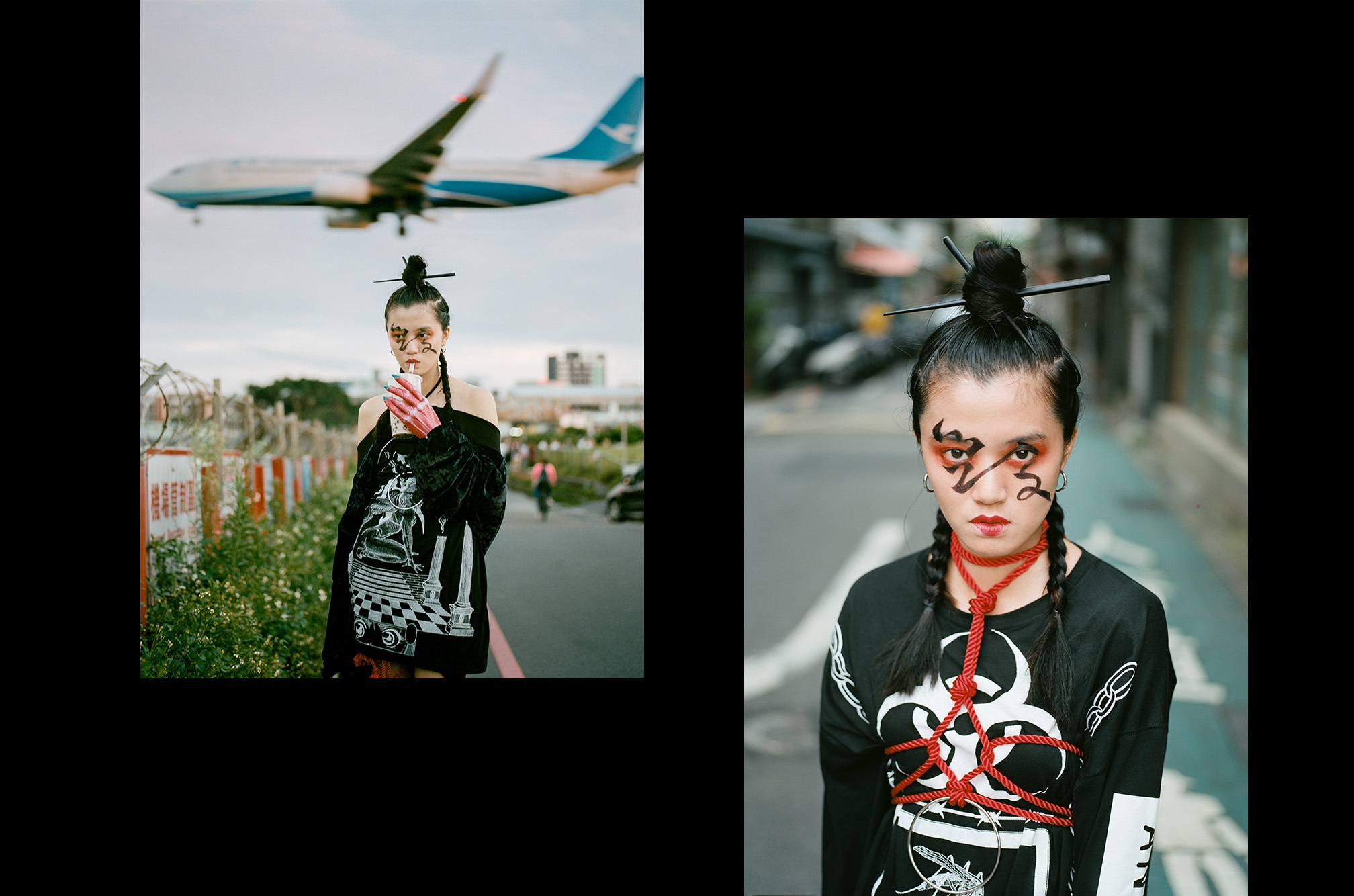
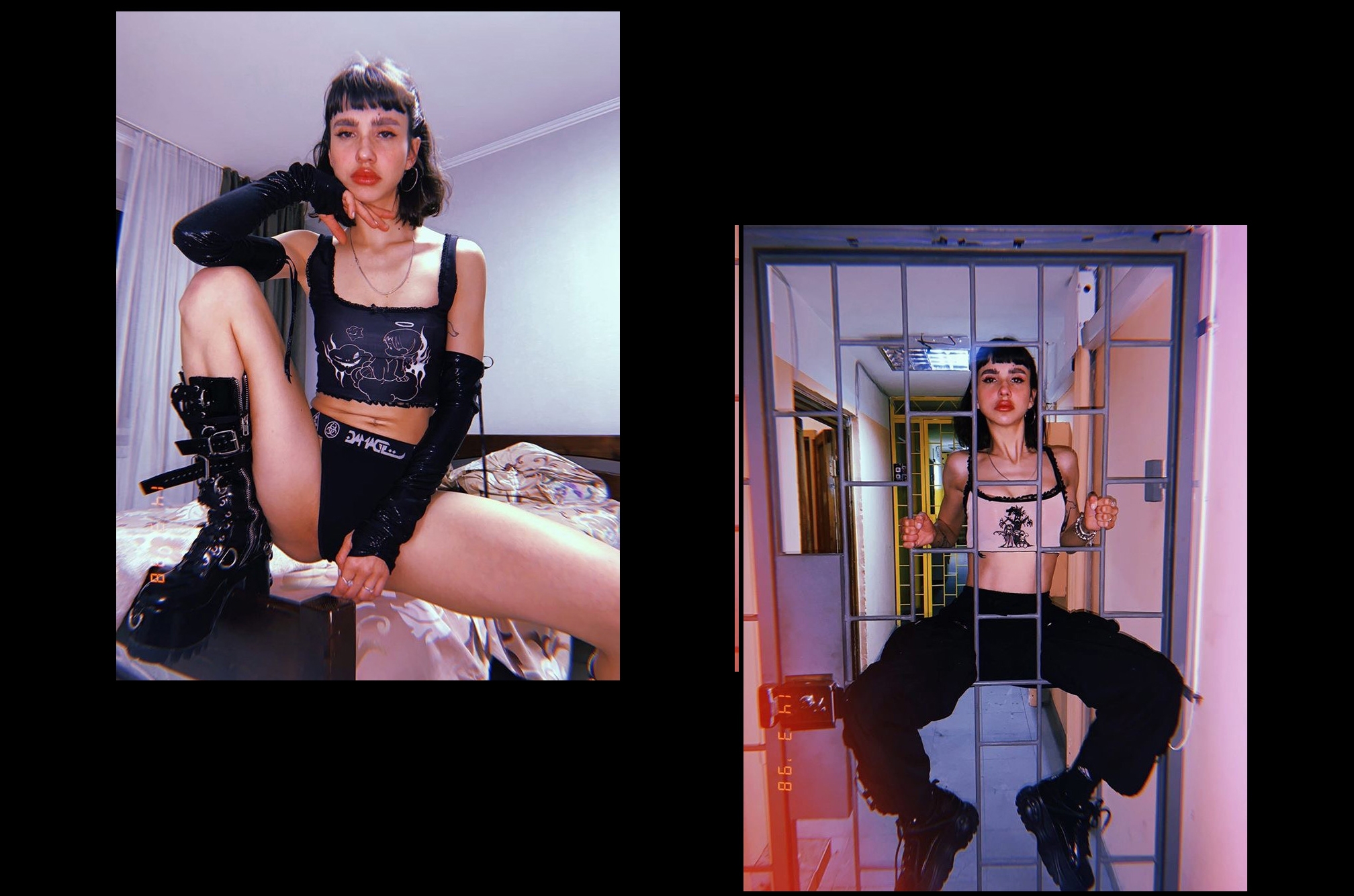
More than just a shop, AMPM is like a community in Taipei. Tell us about the evolution of Petshopsgirl into the shop it is today?
"AMPM is the flagship store for Damage Group and the PetshopsGirl brand, although my wife hasn't produced her personal brand in a while now. AMPM first started out as an underground exhibition space but we merged it with PetshopsGirl and it became a lifestyle and retail shop with a skate ramp as well as an art gallery for shows and pop-ups. This really created a like-minded community of underground art, music and fashion type people in Taipei.
The shop was open for more than ten years but unfortunately, we decided to close the doors to our physical shop four months ago to focus more on the brand and our online shop. We had been doing a lot of parties and events at the shop over the past two years and it began to interfere with production for the Damage Group line, which is also how we make money. We also have a small child to take care of now so it was just becoming hard to juggle everything properly.
Also, the whole issue surrounding the COVID-19 and social distancing didn't help with wanting to maintain an actual physical outlet/event space at all anymore, especially with people shopping more online these days. Maybe in the near future, we'll re-open again, but for the time being, we are just trying to re-group and make the brand stronger."

So you have a new collection coming out soon. What’s the idea behind it and the timeline for its release?
"We have a new collection coming very soon. We're hoping it will be released during the summer of 2020 but we're still waiting to see what happens with the COVID-19 situation. Our sales have dropped the past few months due to pandemic and people seem to be holding back from shopping right now (except for masks, haha) and trying to save money. So it's not a good idea to launch during a period when people are staying in and being frugal with their money.
We also want people to show off they're new gear, which they can't do if they are at home and inside. We design for the people who like to go out and want to show off they're new purchases boldly, and that’s a hard idea to sell right during this moment.
As for the theme, it comprises a topic relating to people being comparable to insects — it's got huge cyber punk vibes. So far, it's looking really amazing and we're having fun working on it together, we hope it will have a good response."
Connect with Damage on Instagram, Facebook and on their online shop here.


